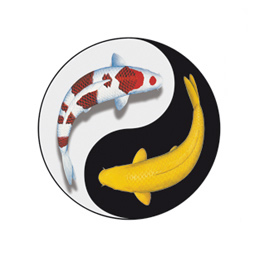|
« home | search | shop | submit a tip | about » |
Related Articles -
JAPANESE WORDS ADOPTED BY THE ENGLISH LANGUAGEBy Linda Byard
Modern languages constantly evolve with words passing in and out from all over the world. English speakers do not always realize how many Japanese words have been incorporated into the English language, and into daily life. Historically, the Japanese adopted words from the Chinese language and more recently from western languages especially English. Some familiar words have traveled back and forth. For example, the “oke” part of “karaoke” comes from the word “okesutora” which was originally borrowed from the English word “orchestra.”
The list below contains many of the Japanese words which we freely use in English language conversations. Translations are provided in case some words are still unfamiliar.
AIKIDO: a martial art similar to judo.
ANIME: This word has traveled from English to Japanese and back again to English. “Anime” comes from the English word “animation” and refers to a style of animation characterized by colorful art, futuristic settings, violence, and sex.
BENTO: a Japanese lunch box or a Japanese-style packed lunch.
BONSAI: cultivation of dwarfed plants or trees.
DAIKON: kind of white radish.
EDAMAME: soybeans boiled in the pod, and salted, often consumed as a snack.
FUTON: type of mattress used as a bed which can often be easily folded and used as a couch.
GEISHA: trained Japanese hostess who entertains men with conversation, dance, and song.
GINGKO: originating in China, a kind of shade or ornamental tree which has fan-shaped leaves with yellow fruit.
GO: a strategic, two-player Japanese board game based on capturing territory.
GYOZA: Japanese name for Chinese dumplings, also known as “pot stickers.”
HAIKU: form of poetry consisting of three lines of five, seven, and five syllables.
HARA KIRI: Ritual suicide. See Seppaku
HIBAKUSHA: A survivor of the atomic bombings of Horoshima and Nagasaki.
HIBACHI: small portable charcoal grill.
IKEBANA: the art of flower arrangement. Budhist in origin, Ikebana has a spiritual dimension and encourages wider appreciation of nature and tolerance and patience.
HONCHO: leader of small group or squad.
HOOCH: a dugout or shelter especially temporary or insubstantial.
JUDO: a form of jujitsu using principles of movement and balance and practiced as a sport or exercise.
JUJITSU: a system of unarmed combat.
KABUKI: traditional and popular form of Japanese theatre with song, mime, and dance performed only by males.
KAMIKAZE: refers to Japanese suicide pilots during WWII, originates from words for “divine wind”.
KARAOKE: literally “empty orchestra,” a form of entertainment in which people sing popular songs against recorded back-up music.
KARATE: a system of unarmed combat using hands and feet as weapons.
KIMONO: a full-length robe with wide sleeves and tied with sash.
KOI: a breed of decorative carp. Originally imported from China, Koi are appreciated outside Japan and can be very valuable, sometimes fetching large sums.
KUDZU: a climbing leguminous plant.
MANGA: A Japanese genre of cartoons and comics.
MIKADO: historic term for Emperor of Japan.
MISO: thick paste made from salted, fermented soybeans.
NAPA or NAPPA cabbage: a form of Chinese cabbage with pale green leaves forming a tight head. In Japan this is a generic term for green vegetables.
NINJA: stealthy warrior.
NOH: form of classical masked Japanese drama with dance and song.
OBI: wide sash to secure kimono.
ORIGAMI: Japanese art of folding paper into decorative shapes and objects.
PACHINKO: gambling game played on a vertical pinball machine.
RAMEN: quick-cooking Chinese noodles usually served in broth with meat and vegetables.
RICKSHAW: a two-wheeled hooded vehicle pulled by people.
SAKE: alcoholic beverage brewed from fermented rice.
SALARY MAN: derived from English, white collar worker.
SAMURAI: a warrior in pre-industrial Japan.
SASHIMI: along with sushi the most popular way of serving fresh, uncooked fish. The word comes from sashi = pierced and mi = body.
SATORI: Budhist term for a state of enlightenment. Satori is the ultimate goal of the practice of Zen Budhism. The state achieved by an epiphany.
SATSUMA: A type of tangerine native to Japan characterized by sharp taste, often seedless.
SAYONARA: Good-bye.
SENSEI: In English the word is most often applied to a Martial Arts instructor, however in Japanese is more general and is gender neutral; a professor or doctor or someone who has achieved mastery of an art.
SEPPAKU: Ritual suicide involving disembowelling , usually to save honor but sometimes as a form of capital punishment.
SHIATSU: a form of massage in which pressure is applied with thumbs and palms to parts of the body.
SHITITAKE MUSHROOM: edible mushroom typically cultivated on the shii tree.
SHOJI: a translucent rice paper screen with wooden frame used as room divider or door.
SOBA: thin, brown buckwheat noodles.
SUDOKU: A puzzle where 81 numbers make up a square grid. The objective is to supply missing numbers. Each 3X3 region has to contain the numbers 1 to 9. In Japanese the name means 'singe number'.
SUMO: a form of heavy-weight wrestling.
SUSHI: rice flavored with vinegar and typically combined with raw or cooked fish and vegetables, then formed into rolls or balls.
TATAMI: straw mat.
TEMPURA: Japanese deep-fried batter dipped seafood and often vegetables.
TERIYAKI: cooking technique where fish or meat is marinated with soy sauce and other ingredients, and then broiled.
TOFU: bean curd made from soy beans.
TSUNAMI: a tidal wave.
TYCOON: historically great lord or prince but now a wealthy business leader.
UDON: type of thick wheat-based noodle.
WASABI: a plant whose thick green root is ground as accompaniment to raw fish, also known as Japanese horseradish.
ZAIBATSU: Business conglomerates, the big four zaibatsus; including Mitsui and Mitsubishi dominate Japanese business. They all have their own banks. Zaibatsus are usually very old established.
ZEN: branch of Buddhism emphasizing meditation and personal awareness.
ZORI: sandals with thong between toes and flat sole.
Numbers
1 - Ichi2 - Ni
3 - San
4 - Shi (Yon)
5 - Go
6 - Roku
7 - Shichi
8 - Hachi
9 - Ku
10 - Juu
References:
Shorter Oxford English Dictionary
www.wikipedia.com
www.answers.com
www.everything2.comLinda Byard
More articles from Linda:
20 Dieting Tips Be slim and live longer! Diet for Kids Healthy kids. Physical Fitness Be serious about fitness Survive Long Flights Living in the stratosphere

